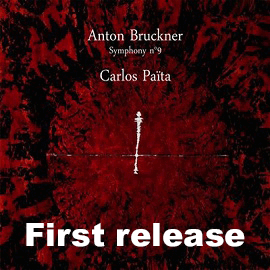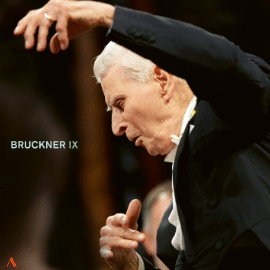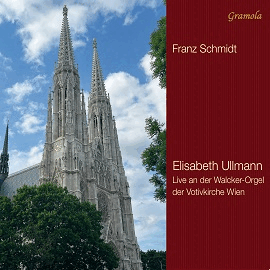Der griechische Komponist Petros Petridis (1892-1977) hat mit Agios Pavlos das erste bedeutende griechische Oratorium komponiert. Er versuchte darin, den polyphonen Ansatz der byzantinischen Musik mit der Form des Oratoriums zu verbinden.
Petros Petridis wurde im türkischen Nigdé (Kapadozien) geboren. Er wurde erst 1913 griechischer Staatsbürger. Er war zunächst in Konstantinopel am American Robert College eingeschrieben. Danach ging er nach Paris und studierte Jura an der Sorbonne und Politikwissenschaften an der Ecole Libre des Sciences Politiques (1911-1914). Später studierte er Musik bei Albert Wolff (1914) und Albert Roussel (1919).
Im Jahr 1950 war in Griechenland ein Komitee zur Feier des 1900. Jahrestages der Ankunft des Heiligen Paulus in Athen gegründet worden. Dabei kam die Idee auf, ein Oratorium über Leben und Wirken des Apostels zu komponieren. Petridis sagt: « Da das Festkomitee im Besitz staatlicher Gelder war, sollte ein Wettbewerb ausgeschrieben werden, um den Geldzuschuss für die Komposition des Oratoriums zu vergeben. Nachdem der Wettbewerb ausgeschrieben und abgeschlossen war, meldete sich außer mir kein Kandidat. » Dennoch tat man sich schwer, Petridis den endgültigen Auftrag zu geben. Kostbare Zeit ging so verloren, aber am Ende hatte Petridis ein wirklich beeindruckendes Werk anzubieten.
Das Libretto besteht aus Passagen aus dem Neuen Testament, die durch Erzählungen über die Handlungen des Apostels miteinander verbunden sind, die vom Komponisten geschrieben und vom Erzähler vorgetragen werden, der die Hauptrolle unter den Solisten spielt. Die Handlung beginnt mit der Steinigung des Protomärtyrers Stephanus und endet mit der Enthauptung des Apostels Paulus in Rom.
Die in Form von Sprechgesang vorgetragene Narration bildet den Hauptstrang des Oratoriums. Daneben gibt es Choräle, Arien und Ensembleszenen, auch in Form von Duos oder Quartetten. Das ergibt eine durchaus abwechslungsreiche und handlungsbezogene dramatische Komposition, die hier als Erstaufnahme von Naxos in einer, aufs Ganze gesehen, guten Interpretation vorgelegt wird.
Einen guten Eindruck hinterlässt auch die die 1. Symphonie (Hellenische). Sie beginnt mit einem feurigen ersten Satz, dem ein elegisches Adagio folgt. Ein charmantes Allegretto führt zum farbigen und tänzerischen Finale. Diese Merkmale charakterisieren auch die Kleft Dances, Tänze einer rauen Bergbevölkerung, mit denen das Programm endet.
Der Dirigent Byron Fidetzis hat auf der Grundlage der Originalmanuskripte endgültige Ausgaben dieser Werke erstellt. Er ist also ein intimer Kenner der Materie und weiß wie er die Musik von Petridis zu dirigieren hat.
The Greek composer Petros Petridis (1892-1977) composed the first important Greek oratorio, Agios Pavlos. In it, he attempted to combine the polyphonic approach of Byzantine music with the form of the oratorio.
Petros Petridis was born in Nigdé (Capadocia) in Turkey. He only became a Greek citizen in 1913. He studied in Constantinople at the American Robert College. He then went to Paris and studied law at the Sorbonne and political science at the Ecole Libre des Sciences Politiques (1911-1914). He later studied music with Albert Wolff (1914) and Albert Roussel (1919).
In 1950, a committee was founded in Greece to celebrate the 1900th anniversary of St. Paul’s arrival in Athens. This gave rise to the idea of composing an oratorio about the life and work of the apostle. Petridis says: « As the festival committee was in possession of state funds, a competition was to be held to award the grant for the composition of the oratorio. After the competition was announced and closed, no candidates came forward apart from me. » Nevertheless, it was difficult to give Petridis the final commission. Precious time was lost, but in the end Petridis had a truly impressive work to offer.
The libretto consists of passages from the New Testament linked by narratives about the apostle’s actions, written by the composer and performed by the narrator, who plays the leading role among the soloists. The plot begins with the stoning of the proto-martyr Stephen and ends with the beheading of the apostle Paul in Rome.
The narration, performed in the form of chant, forms the main strand of the oratorio. In addition, there are chorales, arias and ensemble scenes, also in the form of duos or quartets. This results in a highly varied and dramatic composition with a strong focus on the plot, which is presented here as the first recording by Naxos in a good interpretation overall.
The 1st Symphony (Hellenic) also leaves a good impression. It begins with a fiery first movement, followed by an elegiac Adagio. A charming Allegretto leads to the colorful and dance-like finale. These features also characterize the Kleft Dances, dances of a rugged mountain people, with which the program ends.
The conductor Byron Fidetzis has produced definitive editions of these works based on the original manuscripts. He is therefore an intimate connoisseur of the material and knows how to conduct Petridis’ music.






















